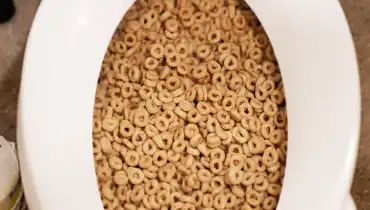On this page underneath you can discover more awesome tips on the subject of Think Twice Before Flushing Food Down Your Toilet.

Intro
Lots of people are typically confronted with the problem of what to do with food waste, particularly when it pertains to leftovers or scraps. One typical inquiry that develops is whether it's alright to purge food down the bathroom. In this post, we'll look into the reasons people may take into consideration purging food, the effects of doing so, and different approaches for correct disposal.
Reasons that individuals could think about purging food
Lack of awareness
Some individuals may not understand the possible damage brought on by purging food down the commode. They may mistakenly think that it's a harmless technique.
Comfort
Purging food down the toilet may look like a quick and very easy remedy to getting rid of unwanted scraps, particularly when there's no close-by trash can available.
Idleness
Sometimes, individuals might simply choose to flush food out of large negligence, without thinking about the repercussions of their activities.
Effects of flushing food down the toilet
Environmental effect
Food waste that winds up in waterways can add to pollution and damage aquatic ecosystems. Furthermore, the water used to flush food can strain water resources.
Plumbing issues
Flushing food can bring about blocked pipes and drains pipes, causing pricey pipes repair services and aggravations.
Types of food that must not be flushed
Coarse foods
Foods with fibrous textures such as celery or corn husks can get entangled in pipes and trigger clogs.
Starchy foods
Starchy foods like pasta and rice can take in water and swell, leading to obstructions in pipes.
Oils and fats
Greasy foods like bacon or cooking oils should never ever be flushed down the bathroom as they can strengthen and trigger blockages.
Appropriate disposal techniques for food waste
Making use of a waste disposal unit
For homes equipped with waste disposal unit, food scraps can be ground up and flushed through the plumbing system. Nonetheless, not all foods are suitable for disposal in this way.
Recycling
Particular food packaging products can be recycled, reducing waste and decreasing ecological effect.
Composting
Composting is an environment-friendly method to get rid of food waste. Organic products can be composted and utilized to enhance soil for horticulture.
The importance of appropriate waste monitoring
Reducing environmental injury
Appropriate waste management techniques, such as composting and recycling, aid minimize contamination and maintain natural deposits for future generations.
Shielding pipes systems
By staying clear of the method of flushing food down the toilet, home owners can stop costly pipes fixings and preserve the honesty of their pipes systems.
Verdict
In conclusion, while it might be alluring to purge food down the toilet for comfort, it is very important to comprehend the potential consequences of this activity. By adopting proper waste administration methods and dealing with food waste sensibly, people can add to much healthier pipes systems and a cleaner atmosphere for all.
FLUSH FOOD DOWN THE TOILET?
FLUSHING FOOD CAN CAUSE BLOCKED DRAINS IN YOUR HOME
All of the plumbing fixtures in your home are connected to the same sewer pipe outside of your home. This outdoor sewer pipe is responsible for transporting all the wastewater from your home to the Council sewer mains. Even small pieces of food that go down the kitchen sink can cause problems for your sewer. It should therefore be obvious that flushing larger bits of food, such as meat, risks a clog in either the toilet itself or the sewer pipes. Flushing greasy food is even more problematic because oil coagulates when it cools, coating the interior lining of your pipes.
THE TOILET IS NOT A BIN
Food isn’t the only thing that people shouldn’t be flushing down the toilet. People use the toilet to dispose of all kinds of things such as tampons, makeup wipes, dental floss, kitty litter and even underwear. Water goes to great lengths to educate residents about the high costs and stress placed on wastewater treatment systems simply from people flushing the wrong stuff down the toilet. It costs taxpayers millions of dollars each year, and homeowners thousands in blocked drain repairs.
FLUSHING FOOD IS A WASTE OF WATER
Flushing food is a waste of our most precious resource - water. In June this year Level 1 water restrictions were introduced to protect water supply from drought conditions. Much of New South Wales continues to be affected by prolonged drought with recent figures revealing up to 97 per cent of the state remains in drought. Depending on whether you have a single or dual flush toilet, every single flush uses between five and 11 litres of water. In the current climate this is a huge amount of water to be wasting on flushing food that should be placed in the bin (or better yet, the compost).
https://www.jabplumbingsolutions.com.au/blog/can-you-flush-food-down-the-toilet

I hope you enjoyed reading our piece on . Thanks so much for taking a few minutes to browse our piece. If you appreciated our article plz don't forget to pass it around. Thank you for being here. Don't forget to pay a visit to our site back soon.
Visit Website
Comments on “Can One to Flush Food Down the Toilet?”